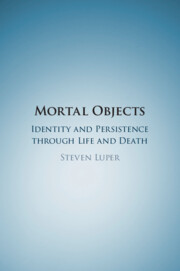Book contents
- Mortal Objects
- Mortal Objects
- Copyright page
- Contents
- Acknowledgments
- Introduction
- Chapter 1 Material Objects
- Chapter 2 Conformism
- Chapter 3 Organisms
- Chapter 4 Incregratism
- Chapter 5 Selves
- Chapter 6 The Cogito
- Chapter 7 Living and Dying
- Chapter 8 Welfare and Nonexistence
- Chapter 9 What We Can Become
- Chapter 10 (Re)making Ourselves
- Chapter 11 The Meaning of Life and Death
- References
- Index
Chapter 10 - (Re)making Ourselves
Published online by Cambridge University Press: 27 January 2022
- Mortal Objects
- Mortal Objects
- Copyright page
- Contents
- Acknowledgments
- Introduction
- Chapter 1 Material Objects
- Chapter 2 Conformism
- Chapter 3 Organisms
- Chapter 4 Incregratism
- Chapter 5 Selves
- Chapter 6 The Cogito
- Chapter 7 Living and Dying
- Chapter 8 Welfare and Nonexistence
- Chapter 9 What We Can Become
- Chapter 10 (Re)making Ourselves
- Chapter 11 The Meaning of Life and Death
- References
- Index
Summary
In the future, advances in genetic modification techniques will make it possible for us to change ourselves dramatically. Should we apply these techniques to ourselves? Should we apply them to our children? In answering these questions, we are hampered by the fact that the interests of an organism are determined by its design, at least in part. Having interests is a matter of possessing features, such as the ability to feel pain and pleasure, by which an organism can be concerned about itself. So choosing our design based on our interests seems circular. Still, we can take it for granted that we will wish to change our welfare apparatus, and that of our children, only in peripheral ways, and give preference to options that make our lifetime welfare level higher than other options. Several sorts of enhancement would benefit us. For example, if we can avoid senescence, we should extend our life span.
- Type
- Chapter
- Information
- Mortal ObjectsIdentity and Persistence through Life and Death, pp. 160 - 175Publisher: Cambridge University PressPrint publication year: 2022

